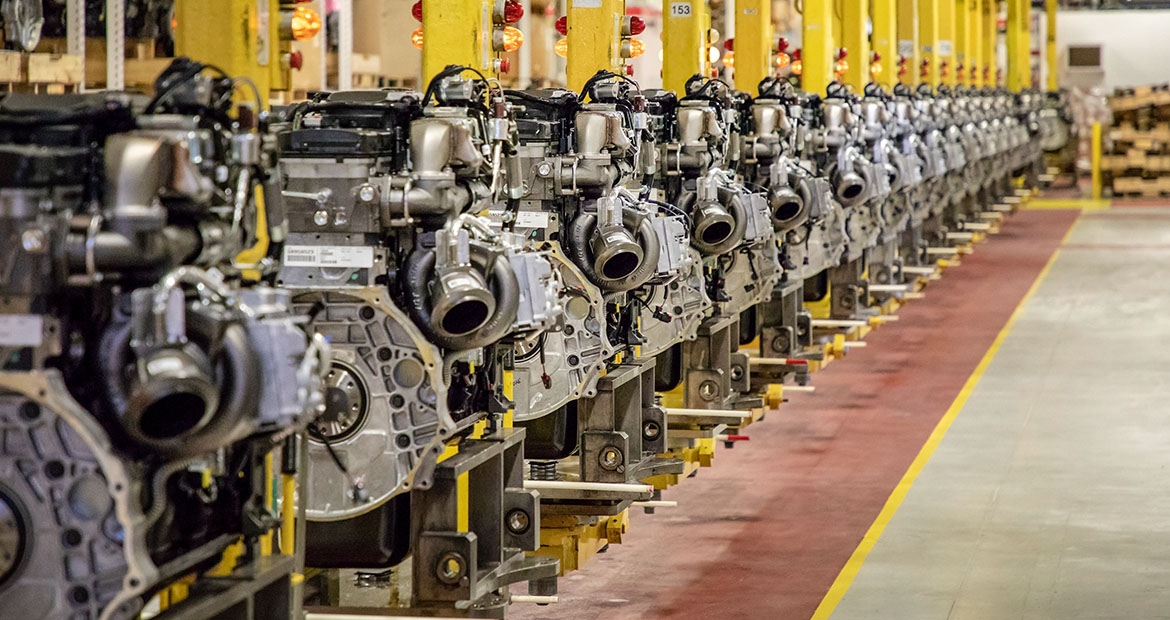By Cummins Inc., Global Power Technology Leader
NORTHAMPTON, MA / ACCESSWIRE / November 21, 2024 / Cummins Inc.
Cummins
Volatile organic compounds (VOCs) are emitted as gases from a variety of products and processes, including paint and coating operations.

While paint can provide protection and aesthetic benefits to products, the VOCs emitted during the painting process also have environmental implications. VOCs can react with nitrogen oxide when exposed to sunlight to create ground-level ozone, contributing to smog. Painting operations also contribute to water and chemical waste and increased electricity and gas usage.
What is Cummins doing about VOC emissions?
Over 70% of Cummins Inc. facilities' VOC emissions come from painting and coating processes, with the remaining from fossil fuel combustion. As part of the PLANET 2050 environmental sustainability strategy, Cummins is targeting a 50% VOC emissions reduction from painting and coating operations by 2030 from a 2018 baseline. As of 2023, we have reduced these emissions by 35%. Although recent acquisitions have slowed goal progress, the integration of newly acquired sites includes VOC emission reduction plans for prioritized facilities. Additionally, roadmaps are being developed for facilities with high VOC emissions which will lay out a path to reach our target. This path will include various actions, such as:
Reducing VOC emissions by eliminating the use of paint
Sometimes, the best solution is also the simplest. That's what a team of sustainability leaders and engineers from the Cummins Columbus Mid-Range Engine Plant (CMEP) discovered in 2020 when they first studied whether they could stop painting their engines.
Material science has evolved since Cummins engines began leaving CMEP over thirty years ago. What used to be made from grey iron that needed rust and corrosion-preventive coatings is now made from composites, aluminum and cast iron, which has better rust prevention capabilities. The CMEP team validated that eliminating paint from the engines would not lead to excess corrosion, ensuring the same engine performance, quality, capability and durability. By eliminating paint from these engines, the site was also able to reduce the energy, waste and water associated with the painting process.
Reducing VOC emissions by switching to waterborne paints and resins
Another effective approach to reducing VOC emissions is switching to waterborne paints. Solvent-based and waterborne paints have similar performance characteristics, but unlike traditional solvent-based paints which emit VOCs during the drying process, waterborne paints use water as the carrier for paint pigments, binders and additives. Since 2013, the Cummins Jamestown Engine Plant (JEP) in New York has used waterborne paints to comply with emissions requirements and reduce pollution.
Across the Atlantic, Cummins plants in the U.K. are also embracing waterborne paints. In 2023, Cummins' Daventry Engine Plant began to see the benefits of this transition. Not only did it reduce VOC emissions by 69% year over year, but the new paints offered an 80% reduction in service claims in test results and customer trials. In 2024, the Darlington Engine Plant in the U.K. began a solvent-to-water-based paint conversion project, aiming to reduce its VOC emissions by about 70%.
Reducing VOC emissions through process optimization
For sites that have already transitioned to waterborne paints, improvements continue to be made through process optimization. Process optimization focuses on improving efficiency by reducing overspray and excessive paint usage, reducing waste generation, reducing energy by optimizing pre- and post- operations.
After JEP transitioned to low-VOC waterborne paint, the plant continued seeking ways to further minimize its environmental impact. In 2023, new long-lasting paint filters were developed, reducing filter waste by approximately 30% and cutting costs. Additionally, JEP enhanced paint transfer efficiency through improved robot programming, leading to a 10% annual paint reduction in 2023 JEP also adopted new paint guns that are 10-15% more efficient.
Cummins Inc.
Cummins, a global power technology leader, is a corporation of complementary business segments that design, manufacture, distribute and service a broad portfolio of power solutions. The company's products range from internal combustion, electric and hybrid integrated power solutions and components including filtration, after treatment, turbochargers, fuel systems, controls systems, air handling systems, automated transmissions, electric power generation systems, microgrid controls, batteries, electrolyzers and fuel cell products.
View additional multimedia and more ESG storytelling from Cummins Inc. on 3blmedia.com.
Contact Info:
Spokesperson: Cummins Inc.
Website: https://www.3blmedia.com/profiles/cummins-inc
Email: info@3blmedia.com
SOURCE: Cummins Inc.
View the original
press release on accesswire.com
